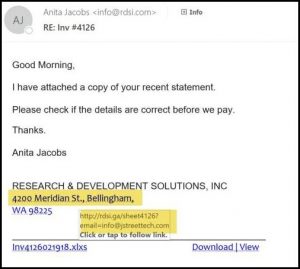To help pay for my university education, I waited tables at a Denny’s restaurant. Over the years I’ve realized that I got a pretty good education at the restaurant, too.
I remember a party of three that came in one evening. I could tell immediately that they were going to be a problem. They were sullen when I served their beverages and took their order. They barely communicated (in an almost surly way) when I checked back with them to ask how their food was. I tried to be cheerful and efficient with them, but throughout the meal I felt like it wasn’t enough. Nothing was going to help.
As they were paying, I overheard them ask to see the manager – never a good sign. As I hid out of sight, I tried to eavesdrop on what was sure to be some complaint about me or my service — even though I felt like I did my best.
Instead, they told my manager that they had come in to the restaurant in bad moods – hungry and tired after a hard day. And that their server (me!) had such a good attitude and took care of them so well that their moods lifted and they actually enjoyed their meal. I was really surprised and grateful that they had actually asked to see the manager to tell him that.
I learned a couple of lessons from that:
- It’s easy to ask to see the manager to complain about something. But it really means something when you report excellent service or a good experience. You will brighten someone’s day, and reward the behavior you would like more of. Anyone can complain and many managers start to tune out grumpy customers – but a customer who bothers to compliment good service has real credibility.
- The best customers can be hidden in negative situations. Other waiters I worked with sometimes tried to pass off customers who looked like problems to avoid the tough situations – but they also passed up a golden opportunity to have an authentic positive impact.
I’ve also been on the receiving end of companies “turning it around”:
- I lost my car’s electronic key fob when I was traveling, and I filled out lost item reports on Alaska Airlines’ web site. I thought it was futile, but a couple of weeks later I got a call from them. The very friendly employee told me that she was sorry that it had taken so long to call me, but apparently my key had traveled around in the overhead bin for quite a while before being discovered. She also told me that Alaska prioritizes returning expensive items like iPods and cell phones. When I told her that electronic car keys often cost hundreds of dollars to replace, she told me she’d raise their priority. Then she shipped mine back to me at no charge with a nice note.
- I dropped my Maui Jim sunglasses on concrete and both lenses cracked – my fault, no error on the part of the company. Since I really liked them, I sent them to Maui Jim and asked them to replace the lenses, which I’d be happy to pay for. Instead, they replaced the lenses, cleaned and adjusted the frame, and sent them back to me in a new case. All at no charge.
- The store with my favorite return policy is Costco. I’ve returned quite a few things to Costco over the years, products that I didn’t need or wasn’t happy with, and I’ve never had a single problem. The only question I ever got was, “Would you like that in cash?”
In all of these cases, and a few more, I’m a customer for life. I fly Alaska Airlines whenever I can. After those sunglasses finally wore out, my next pair were Maui Jim’s, which I bought at Costco.
Some of our best software development clients are those that had tough situations come up during their projects – or came to J Street with a big mess on their hands. When a project is difficult, even if we don’t think it’s our fault, we try to respond with more attention and better customer service. Maybe it would be easier to give up on the project or argue with the client, but that isn’t how long-term relationships are forged.
I think most clients realize that a vendor that tries harder during challenging times is a vendor to rely on. In your workplace or business, it’s important to see the long view, and to try to turn a bad situation into a reason that your customer will come back to you again and again.


